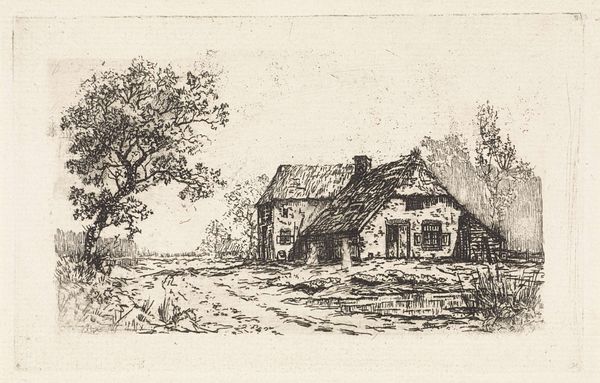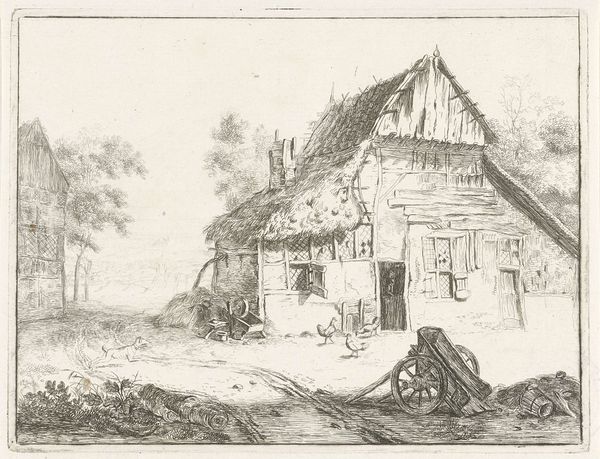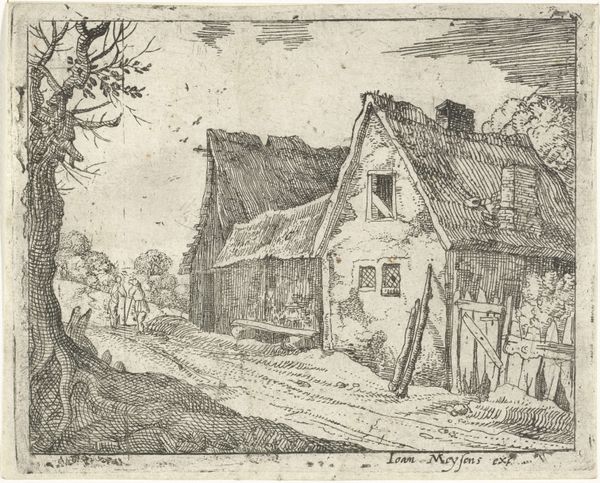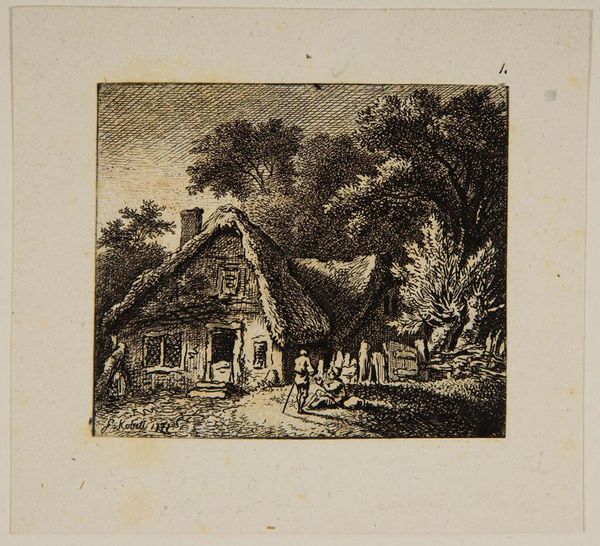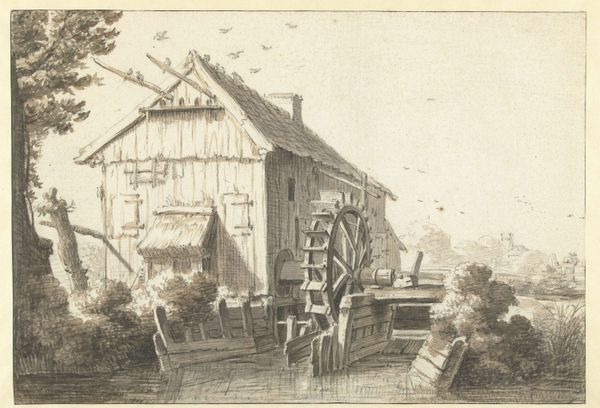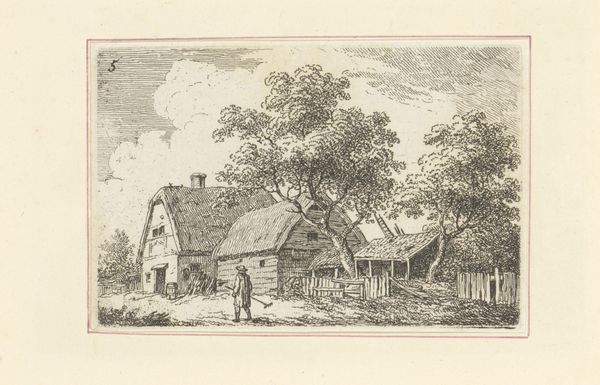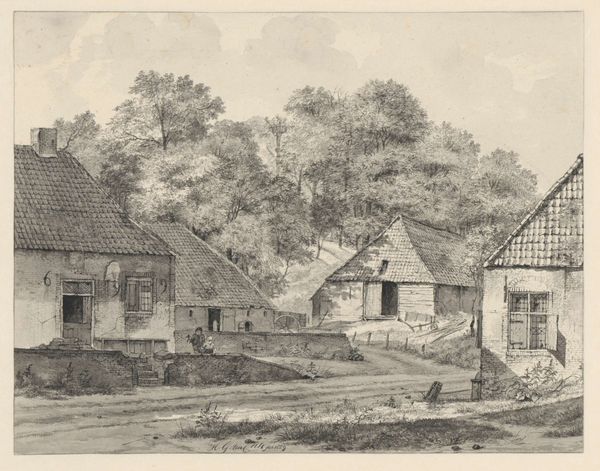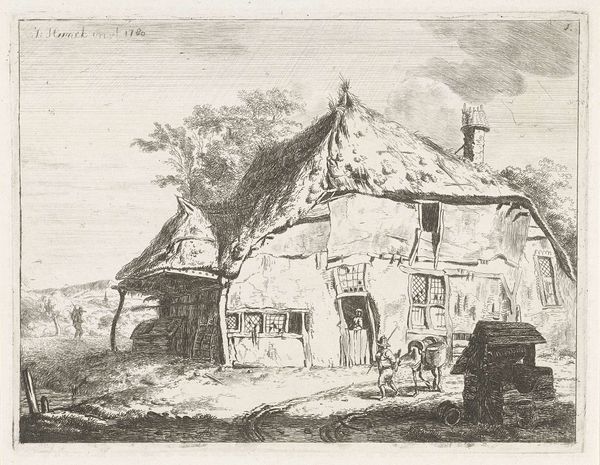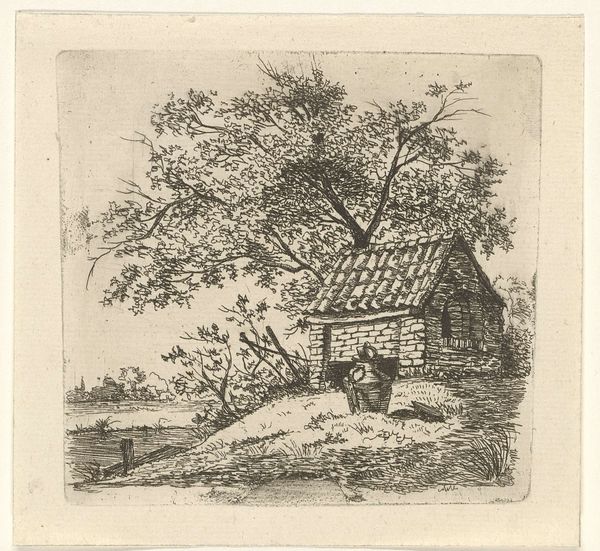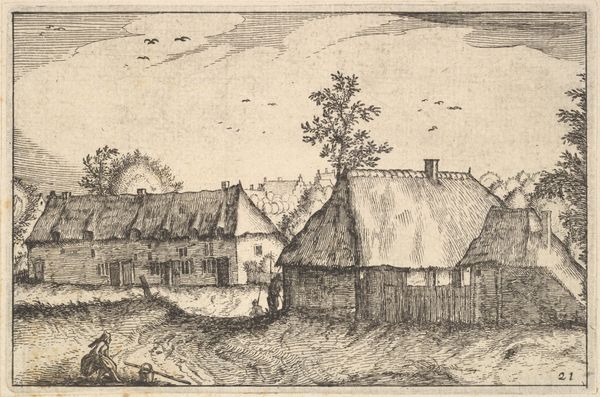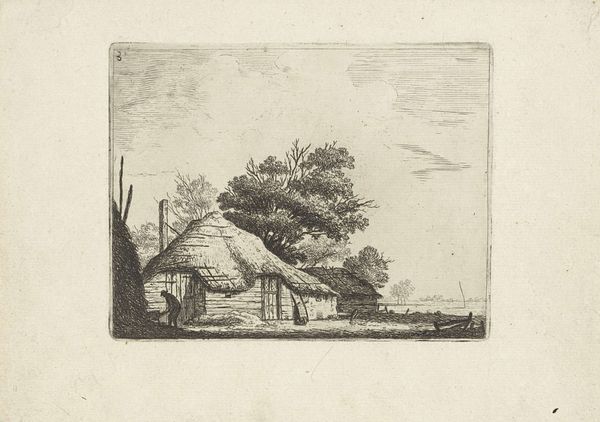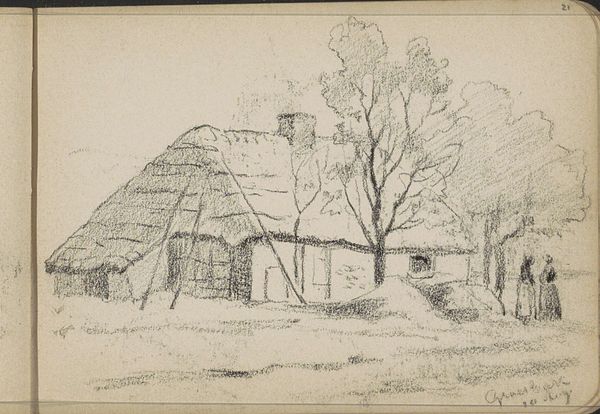
drawing, etching
#
drawing
#
etching
#
landscape
#
line
#
realism
Dimensions: height 82 mm, width 124 mm
Copyright: Rijks Museum: Open Domain
Curator: This etching, "Boerenhoeve," which translates to "Farmhouse," by Alexander Schaepkens, was created sometime between 1830 and 1888. It is currently held here at the Rijksmuseum. Editor: It has such a quaint and unassuming presence. The farmhouse seems almost swallowed up by the surrounding foliage. I wonder, what statement might Schaepkens have been trying to make about humanity's relationship with the land, or perhaps the fleeting nature of life? Curator: It’s interesting you interpret it that way. I see the piece as a document of its time—reflecting the romantic realism prevalent during the period, particularly in its emphasis on rural life and landscapes. These sorts of depictions were a crucial form of social commentary; they can function as a window into the idealized relationship with nature at the rise of industry, offering an antidote to burgeoning urban life, for instance. Editor: That rings true. There is definitely something idyllic about it, the quiet escape the countryside has to offer, even though the etching feels more muted than celebratory, in a way. Curator: Perhaps muted due to the material and etching technique, which creates a softer line quality than other drawing methods of the time. It is important to remember that the medium chosen by Schaepkens influences how we interpret this moment in time, and indeed may well also inform the way we perceive "nature" and our relation to it even now. Editor: Right, etching offered accessibility, a wider distribution perhaps of the images. Its accessibility makes a real statement about who this would reach at the time. Curator: Precisely. When situated in its social context, we can interpret Schaepkens' work as speaking to a developing middle class increasingly displaced by industry. The "Boerenhoeve" then offers a kind of visual respite. Editor: A space for quiet contemplation. Considering the historical period, it is like a reminder of what was and what is threatened. The delicate line work is haunting. I find myself thinking about the way we relate to the land today. Curator: It makes one pause and really think, doesn't it? An enduring conversation for a seemingly simple work.
Comments
No comments
Be the first to comment and join the conversation on the ultimate creative platform.
